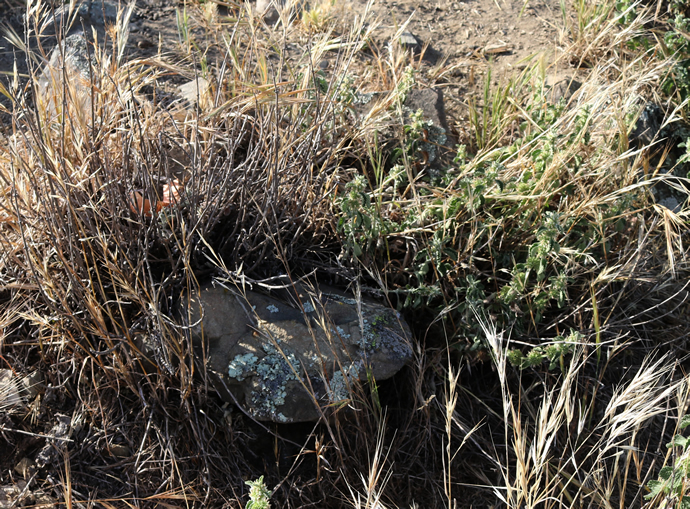Moths away on horehound!
A little more than a year after the release of the clearwing moth (Chamaesphecia mysiniformis) and the plume moth (Wheeleria spilodactylus) for the biocontrol of horehound (Marrubium vulgare), it was time to return to the release sites to look for early signs of establishment. “We were especially encouraged by reports that horehound at the North Canterbury sites was looking very sickly. This is exactly the kind of news we want to hear!” said Ronny Groenteman, who leads the project. So, at the height of summer, with the assistance of our trusted advisor on the project, research scientist Dr John Weiss (Agriculture Victoria, Australia), we visited six of the eight release sites to see what we could find.

The clearwing moth and the plume moth are classical biocontrol agents for horehound, which were tested and released in Australia 20 years prior to their introduction into New Zealand. Horehound is a small to medium perennial shrub that displaces important forage plants, reducing pasture productivity. In New Zealand, horehound is abundant in Canterbury and Otago, but it has become increasingly problematic on dryland farms throughout the country. It is now recognised as one of the worst weeds in lucerne pastures, and the negative economic impacts to farmers may be as high as $29–39 million annually. With support from the Horehound Biocontrol Group, a collective of private landowners led by Gavin Loxton, the process to introduce biocontrol agents for horehound was started in 2017.
Since both the plume moth and the clearwing moth were already tested for host specificity in Australia and released as far back as 1994, the project moved swiftly to the stage of gaining approval for their release, which was granted by the Environmental Protection Authority (EPA) in May 2018. Just after Christmas 2018, field releases of the moths took place over a 2-week period in Marlborough, North Canterbury and the Mackenzie District. There were five releases of the clearwing moth and eight releases of the plume moth. These moths attack different plant parts and are expected to be complementary in their damage: larvae of the plume moth attack the above-ground vegetation, and larvae of the clearwing moth attack the roots. The plume moth is easy to rear and release, and established readily in Australia wherever rainfall is higher than 450 mm per annum (a requirement met in most horehound-infested regions in New Zealand). The clearwing moth was regarded as the more challenging agent to work with due to its specific environmental requirements, such as high temperatures for mating and reproduction.
Both moth species defied our expectations. “We were perplexed that at six of the eight plume moth release sites we barely found any evidence of moth activity, and this was supposed to be the easy one!” said Ronny. Our initial disappointment was replaced with hope when John explained that it is possible that we were searching too soon. “We did not go back to the release sites for 2–3 years after the first releases,” said John. “But we should be encouraged that there is evidence of the presence of the moth and that the plants are in perfect condition to support their growth and development,” he added. On the other hand, the clearwing moth showed very promising early signs. “At one of the clearwing moth release sites we can even report that larvae were found in the root-crowns of some of those miserable-looking plants we were told about,” enthused Ronny. “And even better, at a visit to our very first release site, we found a number of dead horehound plants, some still displaying a label indicating they had received a moth egg. It was a delightful sight!” Even the large, tough horehound plants were visibly weakened by moth attack. Although it is too early to confirm establishment, the first, most crucial hurdle has been successfully crossed.
It will be another 2–3 years before we can officially confirm establishment of both biocontrol agents, but early signs are very promising. Once the moths have established stable, permanent populations at the release sites, we will be able to start the process of field collections and redistribution of infested plant material to increase their distribution and impact.
This project is funded by Environment Canterbury via the Horehound Biocontrol Group.
